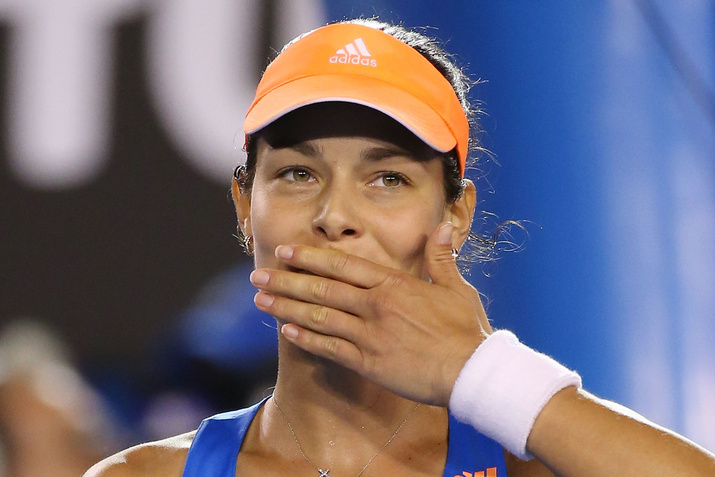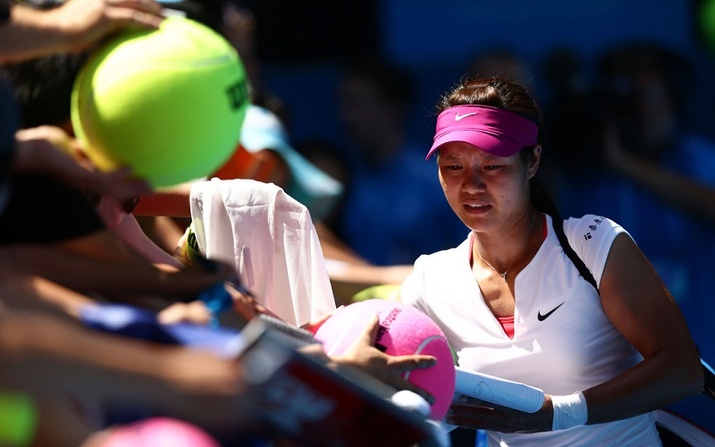Don't miss any stories → Follow Tennis View
FollowWTA Today: Ten Thoughts on Ivanovic, Li, Pennetta, Bouchard
One massive upset and one minor upset kicked off the start of the second week at the Australian Open in eventful fashion. Read 10 takeaways from the day.

Gold star: Since she won Roland Garros in 2008, Ana Ivanovic had lost nine of ten fourth-round matches at majors. Her lone victory had come over Tsvetana Pironkova, a light-hitting opponent well below her level. Never had Ivanovic won a set, or even five games in a set, from world No. 1 Serena Williams. From the start of their three-set battle today, though, the Serb looked like she believed in her ability to capture a match that most felt lay hopelessly beyond her grasp. Even when she lost the first set, Ivanovic kept the pressure on Serena. Just as importantly, she stayed within herself when she took the lead and played confident, aggressive, but not reckless or rushed tennis. As a result, she scored her most significant victory since that first major title six years ago. Ivanovic will be favored to reach her first major semifinal since then, if she can avoid an emotional letdown from this upset. Depending on what she does with it over the next few months, we could look back on today as the moment that reinvented the Serb’s career.
Service restored: Errant ball tosses and double faults had crippled Ivanovic’s serve, the cornerstone of her game together with her forehand. Those issues have not disappeared, and in fact her ball toss wandered for much of the two sets that she won today. Nevertheless, Ivanovic protected her serve as well as she has in a long time during her two comeback victories against Stosur and Williams. She dropped only three of 29 service games, none in the four sets that she won. That increased confidence in this weapon allowed her to swing more freely in return games, when a bolder court positioning reaped rewards.
Putting it in perspective: Serena’s most stunning losses often seem to befall her when the most is expected of her. Nearly all commentators took her status as the title favorite for granted, even when she looked less than her best at times in the first week. But fans should remember the parallels between this setback and those of her last two Melbourne campaigns, which were arguably more shocking. Losses to Ekaterina Makarova in 2012 and Sloane Stephens in 2013 did not prevent Serena from ending each of those seasons as the WTA player of the year. Panic is not advised.
32 (almost) years young: A semifinalist at the US Open last fall, Flavia Pennetta reached quarterfinals at consecutive majors for the first time in her career. The Italian veteran turns 32 in February and stands less than a year removed from a long injury absence. Against a much younger opponent in Angelique Kerber, Pennetta looked physically and mentally fresher deep in their third set. She channeled her emotions more productively than she had for much of her earlier career, not allowing minor setbacks to unravel her. Considering the frustrations besetting Sara Errani and Roberta Vinci, the top two Italian women, Pennetta’s late-career surge comes as a welcome source of pride for her nation.
Diminishing three-set returns: When she first burst through in 2011-12, Angelique Kerber compiled a sensational winning streak in third sets. That streak testified to her durability and toughness in those nerve-jangling moments when an evenly contested battle hangs in the balance. But Kerber has stagnated in 2013-14, and her declining record in third sets reflects that trend. She has won just half of her 22 three-setters over the last 12 months. Much like her Melbourne result, that is a decent record but less impressive than one would expect from a top-10 player of genuine contender.
Worthy of center stage: At first glance, scheduling the Kerber-Pennetta match for Rod Laver Arena and demoting world No. 4 Li Na to Hisense Arena seemed questionable. As it turned out, the contrast of styles between the German and the Italian proved much the more compelling match of the two. Momentum shifts abounded across the three sets that they played, which pitted lefty against righty and Kerber’s baseline-bound game against Pennetta’s all-court prowess. By contrast, Li never faced a serious threat from Makarova in her routine win.

Seizing her second chance: Two-time Australian Open finalist Li may have felt as though she was playing with house money today. After her uneven effort in the previous round, which included saving a match point, she admitted feeling lucky to play another day. Maria Sharapova raised her level sharply after escaping the precipice against Karin Knapp, and Li did the same in a much crisper effort against Makarova. Playing with more purpose and discipline, she may have benefited from playing a lefty for the second straight match. Victory was not a foregone conclusion, for Makarova had extended her to a third set at the US Open last fall. Li will enter her quarterfinal against Pennetta, exactly one day older than her, a heavy favorite to reach her fourth semifinal in six years at her most consistent major.
Not Bourne again: As fellow Tennis View columnist Victoria Chiesa has noted, Makarova has produced the best performances of her career at tournaments ending in “-bourne.” But today was not one of those days. Falling short of a third straight Australian Open quarterfinal, Makarova regularly found herself outmaneuvered by Li from the baseline and forced to pull the trigger in awkward positions. This matchup never has ended well for Makarova, however, whose single stunning victory Down Under remains her upset of Serena Williams two years ago. No part of her game could trouble Li for long.
Teen queen: Playing her first second-week match at a major, Eugenie Bouchard showed her resilience in adversity. The young Canadian rallied from losing a tight first set to an Aussie opponent with most of Rod Laver Arena behind her. Only two games did Bouchard concede over the second and third sets as she rolled into a quarterfinal with Ivanovic, whom she defeated at Wimbledon last year. The Serb is playing much better now than she did then, but one could argue that the Canadian is too. Perhaps the WTA has not completely left behind the era in which teenage prodigies soared to the top.
Déjà vu Down Under: For the second time in three nights, Australian fans filed into Rod Laver Arena to watch one of their compatriots. For the second time in three nights, they reveled in the sight of their player capturing the first set in a tiebreak with a level of tennis beyond their expectations. For the second time in three nights, they watched reality reassert itself over the next two sets. Like Stosur two days before, Casey Dellacqua could not sustain her surprisingly fast start. Also like Stosur, though, she should leave Melbourne without regrets, knowing that she left everything on the court.










